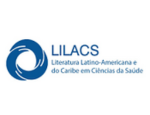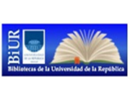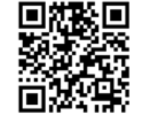Uruguay and the 21st century surgery. New challenges from old ideas…
DOI:
https://doi.org/10.31837/cir.urug/3.2.8Abstract
The history of surgery practically begins about 150 years ago. The foregoing is the darkness of ignorance; only in 1543 the anatomy comes out of the galenic concepts and 100 later Harvey describes the blood circulation, surely inspired by the ideas of Descartes ...
Downloads
Metrics
References
2) Praderí R., Gomez Fossati C. Estefan A.Hepatectomía dextro-mediana por cáncer secundario de hígado.Cir. Urug. 1978;48: 250-3.
3) Wag G., Gao CH., Wei D.,Wang C., Meng W.Anatomy of the lateral ligamnts of the rectum: a controversial point of view.World J Gastroenterol. 2010;16(43):5411-5.
4) Canessa C., Miegge L., Bado J., Silveri C., Labandera D. Anatomic study of lateral pelvic lymp nodes .Implications in the treatment of rectal cancer.Dis.Colon Rectum 2004;47:297.303
5) Praderi R., Bogliaccini G., Navarro T.Cierre rápido de laparotomía con tubos de polietileno.
Cir. Urug.1981; 51:144-7
6) Ivatury RR, Nallathambi M, Rao PM, Rohman M, Stahl WM.Open management of the septic abdomen: therapeutic and prognostic considerations based on APACHE II.Crit Care Med. 1989;17:511-7.
7) Pellegrini C.The surgeon of the future :anchoring innovation and science with moral values. ACS Bulletin. December 2013; 98 :8-14
8 )Fried GM. The challenges of change :Presidential address to the 69º anual meeting of the Central Surgical Association,Madison,Wisconsin. Narch 2012. Surgery 2012;152:509-16.
9) Ruso L. Observations of a Latin American Visitor.AZN J. Surg. 2004;74 :603
10) Fernandez -Moure J.Lost in translation: the Gap in scientific advancements and clinical application.Front Bioeng. Biothechnol 4:43. DOI : 10.3389/fbioe.2016.00043
11) Tullis T, Albert B. Measuring the user experience: collecting,analyzing and opresenting usability metrics (interactives technologies). Burlington MA:Morgan Kaufmann,2008.
Downloads
Published
How to Cite
Issue
Section
License
All articles, videos and images published in Revista Cirugía del Uruguay are under the Creative Commons CC licenses, which is a complement to the traditional copyright, in the following terms: first, the authorship of the referred document must always be acknowledged and secondly none of the article or work published in the journal may have commercial purposes of any nature. The authors retain their copyrights and give the magazine the right of first publication of their work, which will be simultaneously subject to the Creative Commons Attribution-NonCommercial 4.0 International License license that allows the work to be shared whenever the initial publication is indicated in this journal.






























